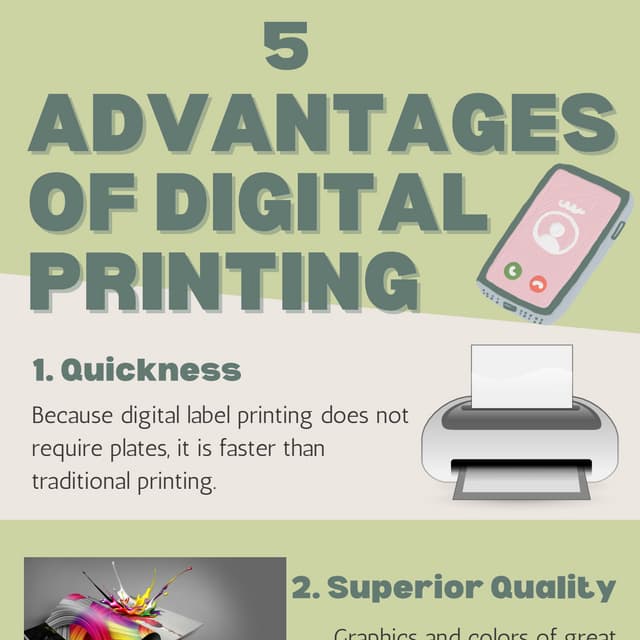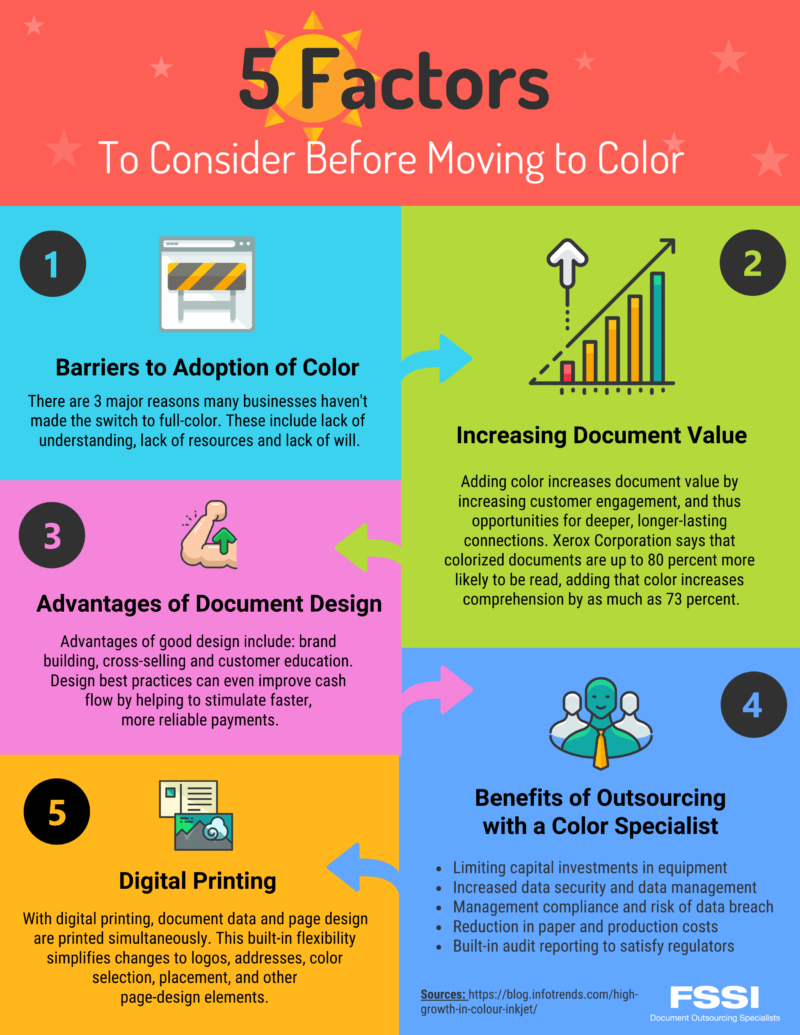4 Easy Facts About Digital Printing Explained
4 Easy Facts About Digital Printing Explained
Blog Article
The Single Strategy To Use For Digital Printing
Table of ContentsThe Greatest Guide To Digital Printing6 Simple Techniques For Digital Printing7 Simple Techniques For Digital PrintingHow Digital Printing can Save You Time, Stress, and Money.Excitement About Digital PrintingDigital Printing Fundamentals Explained
Variable information printing, such as straight mail with customized codes and addresses, is preferably suited for digital printing. Digital quick printing just requires four actions of layout, evaluation, printing and binding to obtain everything done. Digital fast printing has an unmatched benefit: print on demand.According to PMMI, electronic printing permits brands and producers to react swiftly to client needs while boosting the supply chain, lowering warehousing price and waste, and appreciating faster time to market. That all audios excellent, yet how does this innovation do all that? The significant differentiator of these technologies is that there are no set-up charges and no plates with digital printing.
The Basic Principles Of Digital Printing
This results in quicker turnaround time and decreases price when using electronic printing.
Quick manufacturing means getting your item to market much faster. It likewise suggests it's less complicated and faster to make adjustments later, when you alter a recipe, include a SKU, or produce seasonal packaging. Digital printing is highly versatile, so it's easy to make changes to the package design swiftly. All of it returns to home plates.
More supply can mean more waste down the road. With traditional printing methods, short-run printing is just not possible. Because a terrific style can make or damage your item, digital printing constantly produces top quality, clear and colorful graphics each time. Digital printing on versatile bags includes the brilliant, dynamic, and accurate graphics that virtually beckon customers to connect and touch them.
Digital printing is the process of printing digital-based pictures straight onto a selection of media substrates. There is no need for a printing plate, unlike with balanced out printing. Digital data such as PDFs or desktop computer publishing files can be sent directly to the electronic printing machine to print on paper, picture paper, canvas, textile, synthetics, cardstock and other substratums.
The Of Digital Printing
According to PMMI, digital printing enables brands and producers to respond quickly to customer needs while boosting the supply chain, reducing warehousing price and waste, and enjoying faster time to market. That all sounds great, but how does this modern technology do all that? The significant differentiator of these modern technologies is that there are no set up costs and no plates with electronic printing.
According to Wikipedia, the best distinction in between electronic printing and traditional methods such as lithography, flexography, gravure, or letterpress is that there is no requirement to change printing plates in electronic printing, whereas in these analog printing techniques home plates are consistently replaced. This causes quicker turnaround time and reduces price when using electronic printing.

4 Simple Techniques For Digital Printing
With conventional printing techniques, short-run printing is simply not possible. Due to the fact that an excellent design can make or damage your product, electronic printing regularly develops top notch, clear and vibrant graphics each time.

According to PMMI, digital printing permits brands and suppliers to respond promptly to customer needs while improving the supply chain, decreasing warehousing price and waste, and taking pleasure in faster time to market. That all sounds fantastic, yet exactly how does this technology do all that? The significant differentiator of these innovations is that there are no set-up charges and no plates with digital printing.
Digital Printing Fundamentals Explained
According to Wikipedia, the best difference between electronic printing and conventional methods such as lithography, flexography, gravure, or letterpress is that there is no requirement to replace printing plates in digital printing, whereas in these analog printing approaches the plates are consistently changed. This leads to quicker turn-around time and reduces cost when making use of electronic printing.
Digital printing is very versatile, so informative post it's easy to make changes to the plan style rapidly. It all goes back to the plates.

Get This Report about Digital Printing
Digital printing is the procedure of printing digital-based photos directly onto a variety of media substratums. There is no need for a printing plate, unlike with offset printing. Digital files such as PDFs or desktop computer posting files can be sent out directly to the electronic printing machine to print on paper, image paper, canvas, material, synthetics, cardstock and look at this now other substrates.
Report this page